How much auto insurance do I need?
What you need to know

That new car smell has faded and now you're hoping your auto insurance premiums might do the same. Spoiler alert - if you're still making auto loan payments, shopping around for lower cost coverage is your best bet for saving money. Most auto lenders require you to maintain full coverage until the loan balance reaches zero.
If, however, you've made the final loan payment on your vehicle, you have other options that can drastically lower your annual auto insurance costs. But, it can be tricky to weigh the benefits of reducing coverage amounts against the amount of risk you're willing to accept. For example, two identical vehicles might need different types and amounts of coverage. How is that possible?
Let's meet Jack and Jill to find out.
Jack and Jill live in different states, but they have one thing in common. Each owns the identical make, model, and year sports coupe, free and clear. Jill carries more insurance on her car than Jack. Let's look at why she decided to carry comprehensive and collision coverage, while Jack felt minimum state required liability insurance was enough to meet his needs.
Jill doesn't have an emergency fund.
While Jill has a small savings nest egg that she could use to cover the insurance deductible, she doesn't have enough money set aside to pay for much else. Since she doesn't have a healthy savings cushion, Jill doesn't feel comfortable with only the minimum liability insurance required by the state. She knows without adequate auto insurance coverage, paying out-of-pocket for damages to her vehicle, and maybe even medical claims to an injured party, would result in financial hardship.
Jill resides in an area that experiences severe weather.
Jill lives in a region known for flooding and tornadoes. She's been lucky so far, but she's not willing to risk wiping out her savings when she can pay a higher insurance premium for peace of mind. Her chosen coverage allows her to limit out-of-pocket costs should her luck run out.
Jill doesn't want to play the game of "What If?"
In contrast, Jack only carries minimum liability insurance as required by the state. He understands that while he might save money by paying less each year in auto insurance coverage, he's exposing himself to more risk. For Jack, it's a calculated risk. He puts the money he's not paying in premiums into a savings account.
Jack feels confident that if his car is damaged, the amount in his savings account is enough to cover the deductible plus the potential medical bills that his insurance may not cover.
If you're searching for a competitive auto insurance quote, look beyond the lowest advertised rates and ask questions to help determine if your needs are more in line with Jack or Jill.
What are the liability insurance requirements in my state?
Is personal injury protection (PIP) required in my state?
What are the available coverage limits for myself and passengers injured in my car under PIP?
Does my state require drivers to carry uninsured motorist insurance (UIM)?
If my state doesn't require UIM, do I have enough money in savings to cover potential medical bills if I'm in an accident caused by an uninsured driver?
If, in addition to my state's minimum liability insurance requirements, I want to add collision and comprehensive coverage, will the deductible plus the premium cost more than the value of my vehicle?
Are there other add-on coverage options I should consider based on my geographic location and lifestyle?
The ideal amount of auto insurance depends on factors that can be determined only by measuring what's required by your state and auto lender against your financial comfort level. Take care to add only those coverages that offer value.



